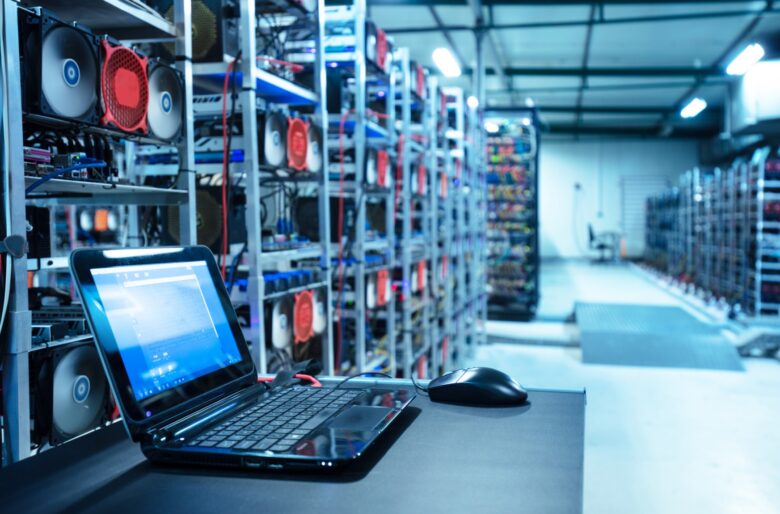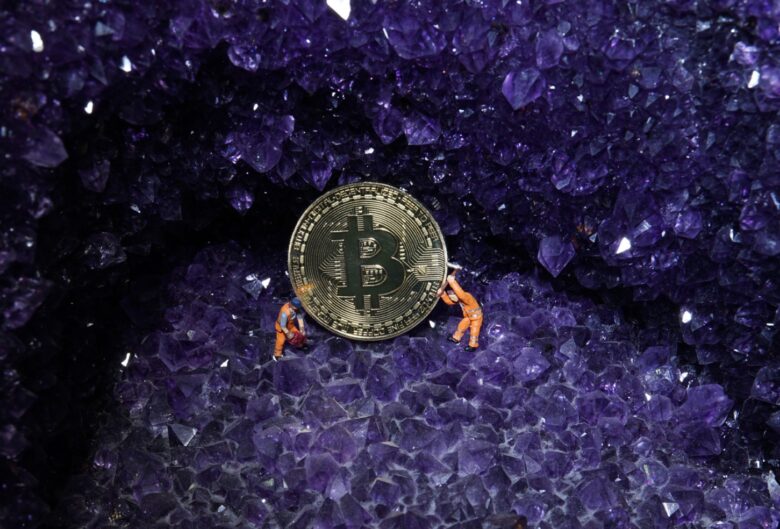Miner management can be a tricky challenge for any crypto lover looking to contribute to the blockchain platform. And downtime is a problem that afflicts miners all over the world from time to time.
However, running a tight ship and following best practice can help to minimise downtime and maximise profitability. Here are a few tried and tested tips and tricks, courtesy of the expert’s Foreman Mining.
Contents
Choose reliable mining hardware
One of the most important factors that can help minimise downtime is choosing high-quality and reliable mining hardware. This will ensure that your mining rig operates smoothly and reduces the chances of unexpected downtime.

Source: ezgif.com
Optimise cooling and ventilation
Overheating is a common problem that can cause downtime in mining rigs. Therefore, it is essential to optimise cooling and ventilation to maintain a stable temperature for your hardware. You can achieve this by using fans, coolers, or other cooling solutions like liquid coolants.
Maintain and monitor your hardware
Keep a close eye on your mining hardware and monitor its performance regularly. This can help you identify any issues early and take necessary action to prevent downtime.
Proper Bitcoin miner management can significantly reduce downtime and increase mining efficiency by ensuring that the mining hardware is operating at peak performance and minimizing the risk of hardware failures. Regularly clean the hardware, replace worn-out parts, and update the firmware to the latest version to achieve this.
Similarly, monitoring the hardware’s performance can help identify any issues before they become significant problems. When a problem does arise, troubleshooting the issue and fixing it quickly can minimise downtime and ensure that the mining operation continues to run smoothly.
Thanks to solutions like Foreman Mining Management it’s now possible to do this remotely from virtually anywhere in the world – receiving alerts, monitoring hashrate, checking accounts and automating fixes to common problems with ease.

Source: trustradius.com
Use a backup power source
Power outages can cause significant downtime in mining operations. To prevent this, you can consider using a backup power source such as a generator or UPS (Uninterruptible Power Supply).
Choose a reliable mining pool
Joining a reliable mining pool can also help minimize downtime. This is because mining pools distribute the workload among multiple miners, reducing the chances of downtime caused by hardware failures or other issues.
Keep your software up-to-date
Keeping your mining software up-to-date is essential to prevent downtime caused by bugs or security vulnerabilities. Make sure to install the latest updates and patches as soon as they become available.
By implementing these strategies, you can help minimize downtime in your Bitcoin mining operation and ensure that your hardware runs smoothly and efficiently.

Source: canva.com
The Benefits of Minimising Downtime
When it comes to running a successful Bitcoin mining operation, reducing downtime should be one of the highest priorities. That is because downtime can have a major impact on profits. Many factors can contribute to downtime, but the most severe come from operational or technical difficulties. Difficulty with hardware maintenance and unexpected power outages are just two examples of these issues.
The good news is that there are loads of ways to minimise downtime and maximise profits for your business. Here are some easy strategies you can use:
-Make sure all your equipment is up-to-date before running operations – This involves checking that everything runs properly and ensuring regular inspection intervals for possible repairs or upgrades to processors, memory cards/RAMs, working systems or operating systems.
-Set up safety protocols – Most prevention efforts should involve setting up protocols such as redundancies within power sources and securing data validation algorithms in order to work around possible problems while they’re solved in a timely manner.
-Minimise human error – As an important factor contributing to downtime during mining operations, human errors can cause delays or even complete failure. Therefore, it’s important to equip miners with proper training and knowledge in order to prevent repeating mistakes that could have been avoided.
-Invest in cloud mining services – Mining on the cloud has become popular recently because most mistakes are taken care of by the service provider which minimises potential downtime due to human errors caused by forgetfulness or lack of experience.
Strategies for Maximising Profitability
In order to maximise profitability, Bitcoin miners must ensure an uninterrupted source of electricity and efficient usage of resources. A number of strategies can enable miners to achieve consistent profits and longevity in the market:
– Invest in high-quality ASICs: When selecting an ASIC provider, evaluate customer reviews as well as the pricing, power consumption capabilities and network hashrate that each model provides. If a miner is running multiple rigs, they may benefit from economy-of-scale by pooling their purchasing power to purchase bulk packages.
– Optimize mining software: This can reduce computing times and help extend hardware longevity. This can be accomplished by finding tuning parameters that best suit each hardware model’s specifications, such as setting a low intensity level or maximizing thread concurrency.
– Use renewable energy sources: Incorporating renewable forms of energy such as solar or wind power into operations can reduce electricity bills and help minerscut costs further. Additionally, some countries offer tax benefits for businesses using green energy sources, which can then be used to offset operational expenses.

Source: canva.com
Remember…
Bitcoin mining is the process of verifying and adding transactions to the blockchain ledger – a decentralised, digital public ledger that records all Bitcoin transactions. Bitcoin miners use specialised computers and software to solve complex mathematical problems and validate transactions in the network – so the love you show your hardware, the better your results should be.
In exchange for their efforts, miners receive newly minted Bitcoins as a reward. This process is called “mining” because it resembles the mining of gold, where miners use their resources and effort to extract precious metals from the earth.
The mining process also helps secure the Bitcoin network by making it more difficult for attackers to manipulate the blockchain. The difficulty of mining Bitcoins is designed to increase over time, which means that it becomes increasingly difficult to mine new Bitcoins as the network grows.
As a result, Bitcoin mining has become a specialised and competitive industry, with miners using powerful computing hardware and electricity to compete for rewards.
